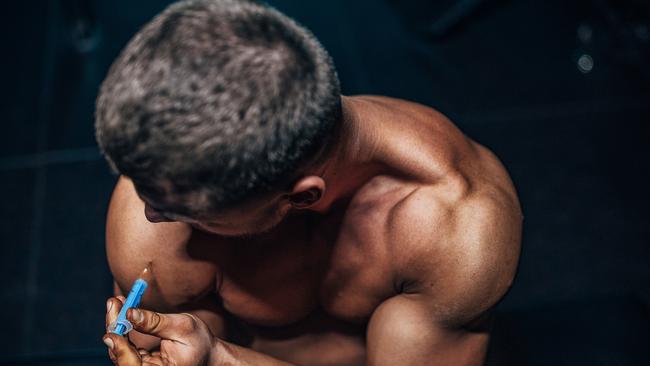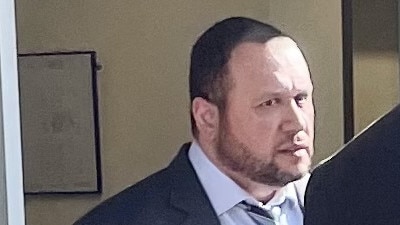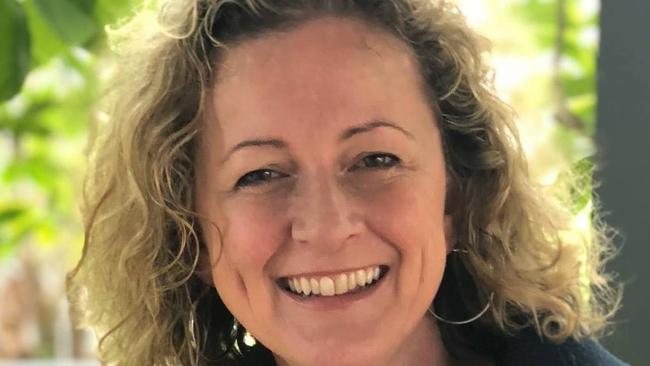Exposed: the lucrative black market image drug trade authorities can’t stop
A massive online black market drug trade on websites and social media is continuing to grow amidst an increase in steroid use in Cairns.

Cairns
Don't miss out on the headlines from Cairns. Followed categories will be added to My News.
Authorities are struggling to shut down a growing “wild west” of online image-enhancing drug trading on websites and social media, as health organisations track an increase in the number of people injecting steroids across the state.
The Cairns Hospital and Hinterland Health Service said in a statement that for “several years now, the number of people who inject steroids have been increasing in attendance at needle syringe programs across the state”.
While Cairns bodybuilder who does not use steroids has said that it is common to see steroid users in Cairns gyms.
“There are certain tell-tale signs” she said.
“You look at their physique - you can tell. They are often very muscular with large pimples on their shoulders and backs”.
It comes as a Cairns Post investigation has revealed a large number of websites and social media pages selling hundreds of different varieties of illicit image-enhancing drugs to Australian consumers.

The websites and pages sell bodybuilding testosterone and other so-called image-enhancing drugs without a prescription, marketed and mailed to Australians from as far away as Iceland and as nearby as Tonga.
Items being sold include Trenbolone, a steroid used on livestock to increase muscle growth and appetite, and the aggression-inducing Halotestin, an anabolic steroid used to treat advanced-stage breast cancer.
The steroid use is often sold alongside what authorities term “performance and image-enhancing drugs” which includes illicit supplies of the highly restricted diabetes drug Ozempic, human growth hormone, tanning agents, such as melanotan-I and melanotan-II and anti-muscle wasting agents usually prescribed to the elderly.

There are no age or ID requirements set by these companies before posting out products.
The Australian Criminal Intelligence Commission found the number of steroids detected at the border increased by 64 per cent between 2019-20 and 2020-21 – the last publicly available recorded period.
The data revealed that the cost for a single 10ml vial of testosterone in Queensland has fallen from $230 in 2010-11 to $80 in 2019-20.
ACIC data shows China was the primary embarkation point for PIED and 80 per cent of drugs detected were posted via international mail.
In the past decade, steroid seizures have increased by 80 per cent and national steroid arrests have shot up 218 per cent.
Earlier this year, the Cairns Supreme Court sentenced a Bondi man who handled more than $900,000 in the 20 months he ran a steroid black market website.
Steven Spilly, 49, pleaded guilty to trafficking a dangerous drug between Sydney and Cairns from January 2020 to September 2021.

He was sentenced to four years and nine months jail, suspended after 12 months.
The most recent Australian National Drug Strategy Household Survey found non-medical anabolic steroid use almost tripled in the 18 years between 2001 and 2019, with men in their mid-to-late 30s the most common users.
In a statement, the Therapeutic Goods Administration warned that the known risks of PIED “include shrunken testes, liver failure, heart attack and stroke. Some of the known risks of using human growth hormone include diabetes and excessive growth of the bones in your face, hands and feet (acromegaly)”.
The sites and social media pages selling the PIED also often feature small subcategories of illicit sedatives and opiates like xanax, valium, tramadol and methoxyflurane – often administered by paramedics at trauma scenes, providing rapid short-term analgesia through a whistle-like device.

“There is a lot of pressure on people, particularly if they are competing in body building where every part of their body is being judged and scrutinised” the Cairns body builder said.
Eating disorder charity Butterfly Foundation’s most recent youth survey found more than 90 per cent of 12 to 18-year-olds reported some level of body-image concern, with two-thirds of men and women reporting they wanted to be more muscular.”
“We don’t really have enough research of the long-term impacts of these drugs and that’s worrying,” Melissa Wilton, head of communications and engagement at Butterfly Foundation said
“There is increasing pressure on people particularly young people to look a certain way.”
Ms Wilton said the causes were complex and that body image pressure was “embedded in our culture”, but noted the impact of bodybuilding and fitness influencers on social media.
“They are often giving advice without any health qualifications,” she said.
More Coverage
Originally published as Exposed: the lucrative black market image drug trade authorities can’t stop




